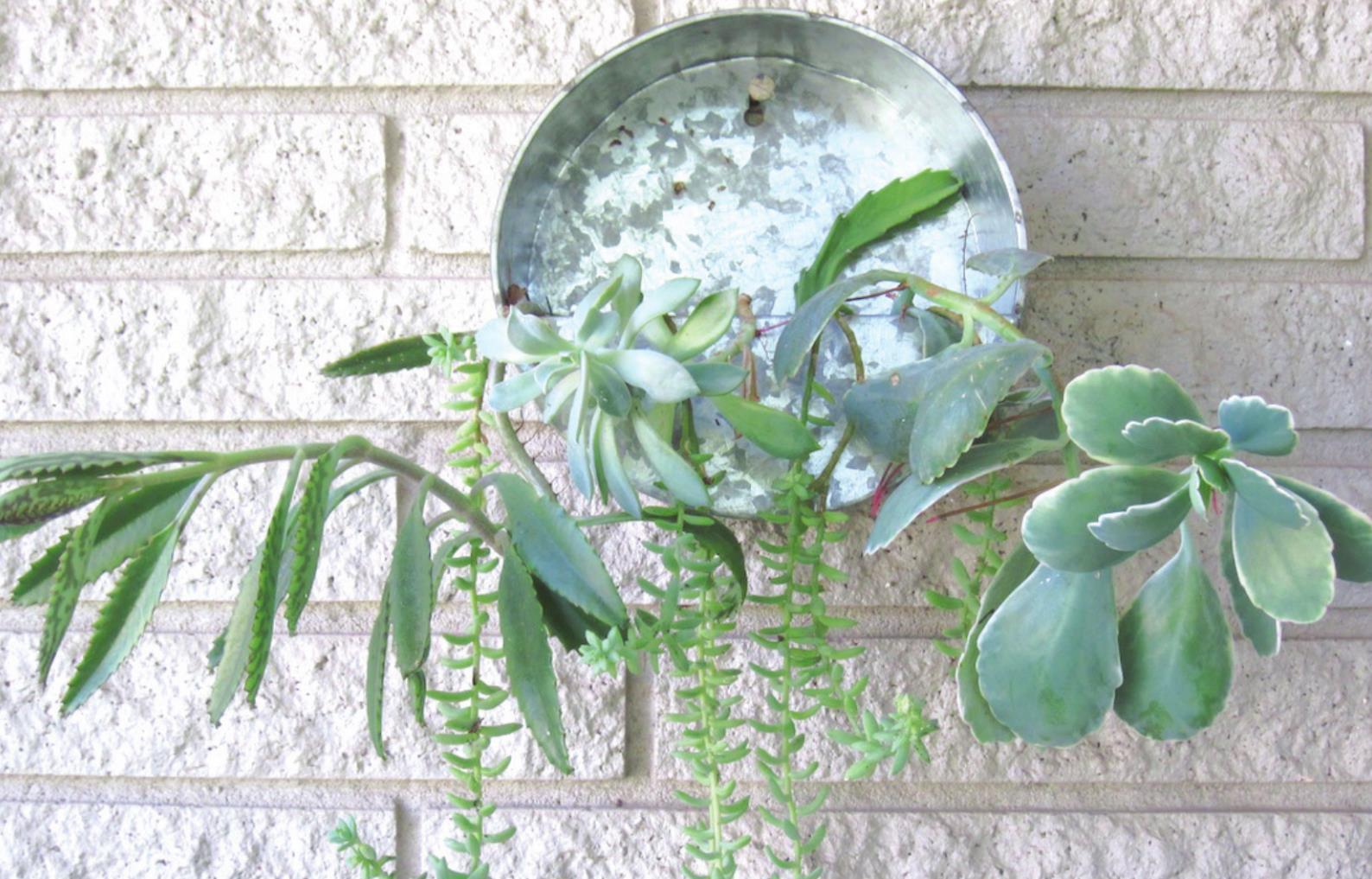
Wall planter with trailing succulents hangs on wall near Gainer front door.
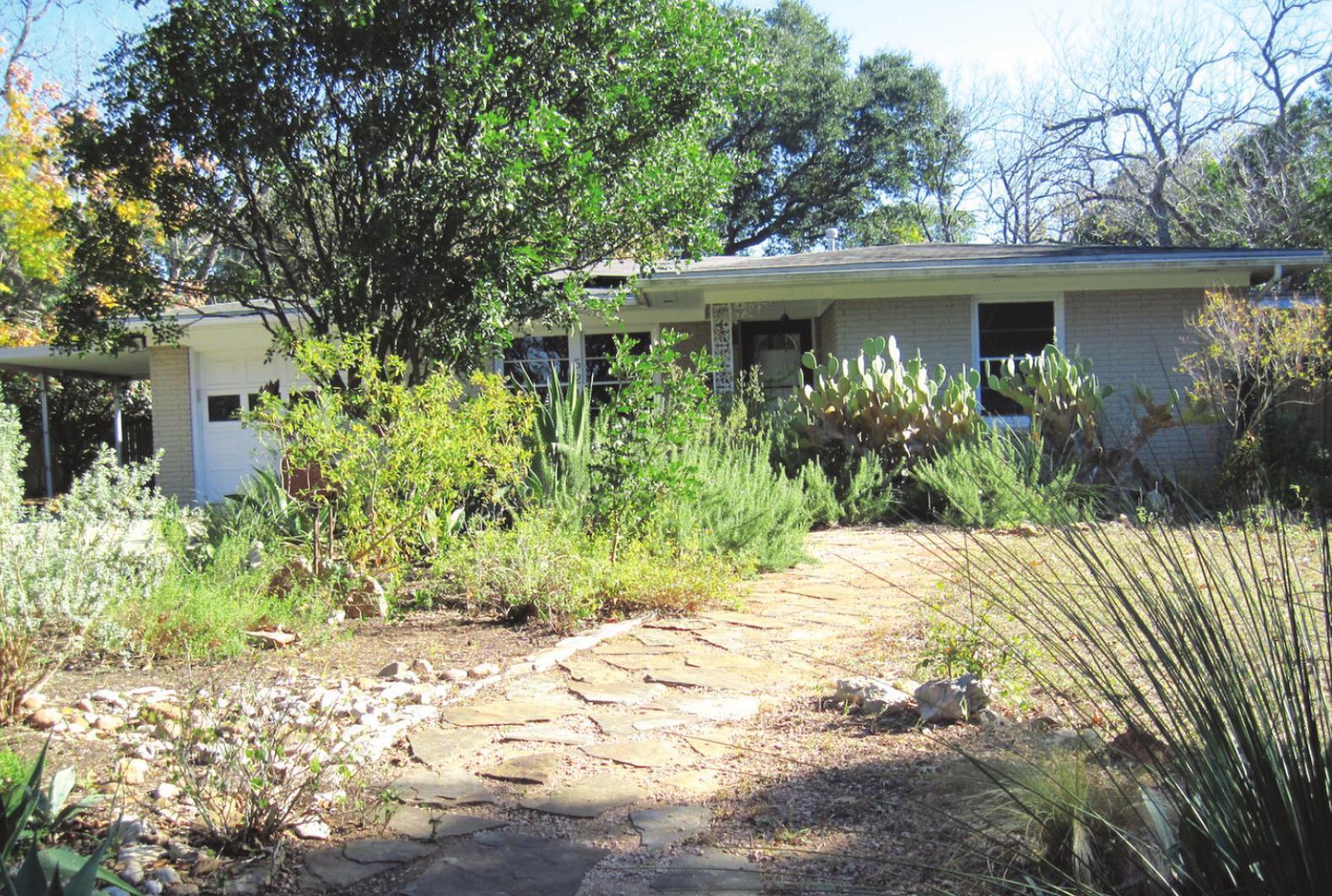
Native plants fill Gainer home front yard beside flagstone entry walk. Photos by Sharon Lockett
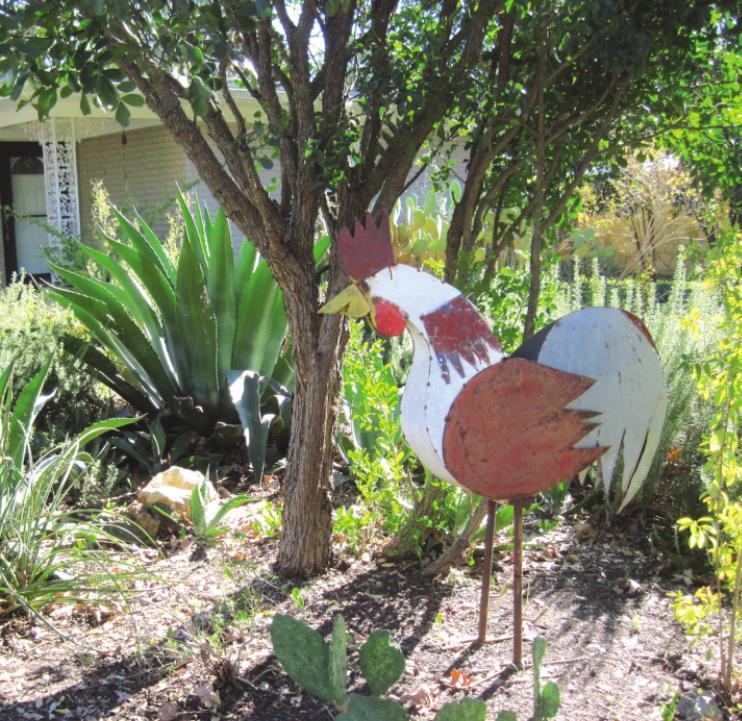
Above, rooster garden ornament surveys rosemary, agaves, red yucca, and spineless cactus by mountain laurel tree.
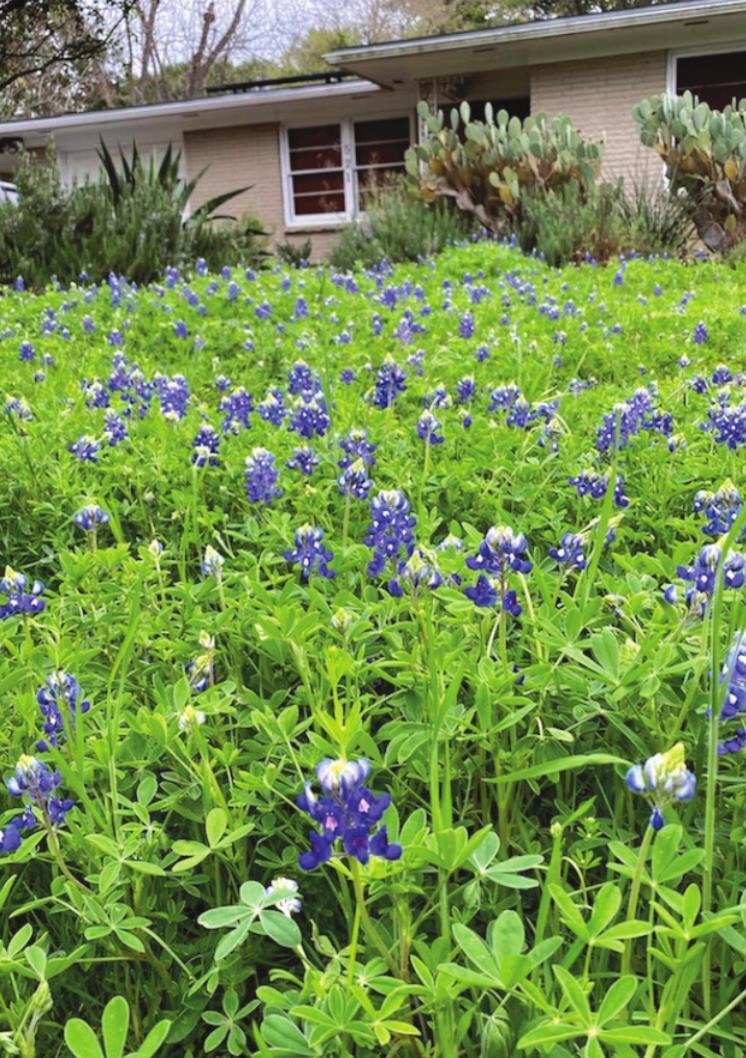
Right, Unexpected bluebonnets fill Gainer yard in spring. Photo by Jesse Gainer
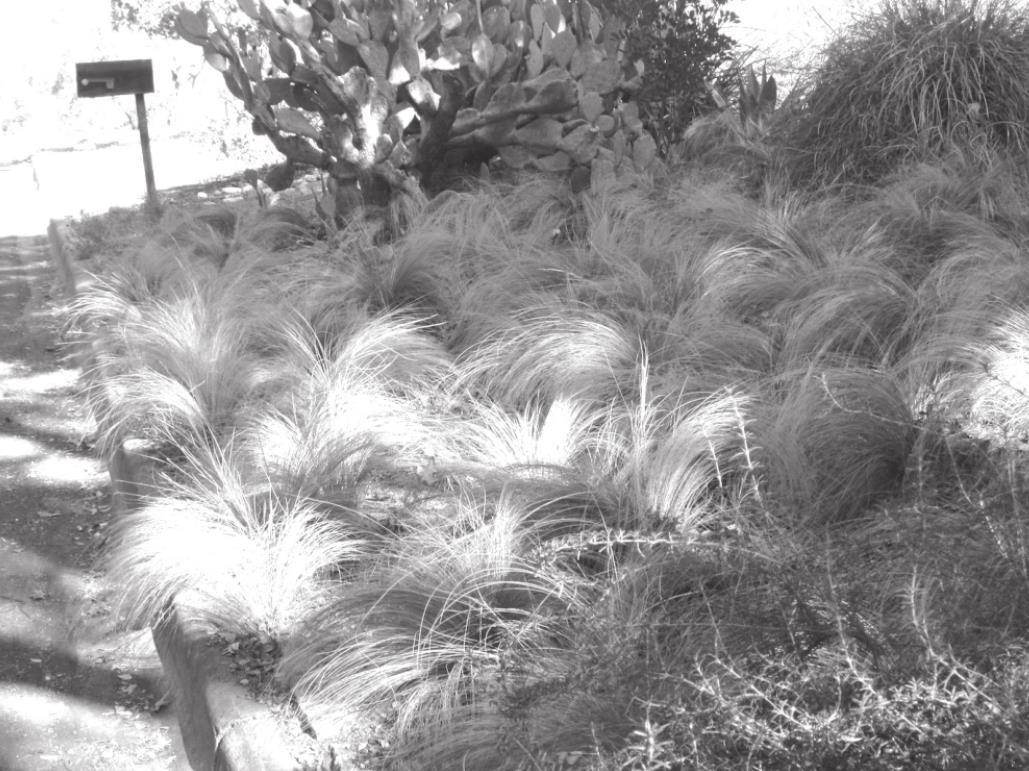
Feather grass on curbside slope is low-maintenance and stabilizes soil. Photo by Sharon Lockett
Yard of the Month
Jesse Gainer and Nancy Valdez-Gainer were delighted to move in July 2019 to a San Marcos house on Franklin Street near the Texas State campus, especially since the property included a sustainable landscape with many native plants. But then spring 2020 brought a huge surprise when the front lawn became a solid field of bluebonnets. The new owners have added a few of their own touches to the yard, but give full credit to former owners Kris Spilker and Sean McMannnis, for the crowning glory of a space full of Texas bluebonnets.
Partly shaded by an ancient oak tree left undisturbed in the middle of the street when the neighborhood was developed, the Gainers’ yard still has enough sunshine for a thick clumps of feather grasses on the front curbside slope, holding the soil and reacting to passing breezes. Nearby a large burr oak offers shade to temper afternoon sun in a bed of spineless cactus surrounded by dark green spiny sotol. But most native plants require full sun to thrive, and the lawn of bluebonnets demonstrate how using the right plants in the right location insures a successful landscape. More spineless nopal, coupled with rosemary, fill planting areas near the house, where new wildflowers may show up next spring. A good friend of the new owners constructed a “garden hood” of little paper houses designed to decompose during the winter and release seeds inside for spring germination.
A planting area between the driveway and lawn includes other kinds of cactus, including large leaf blue agave and yuccas, whose strong leaf shapes are tempered by longleaved sotols, rosemary, and gray cenizo (Texas sage). Lower to the ground are tricolor lantana, which will bloom again in warmer weather, as well as salvia and skullcap, both offering red blossoms in season. Other familiar plants near the house are oleander (with magenta blooms), a flame acanthus and a coral vine clinging to one corner of the house. These blooms, along with the flower spikes of red yucca, attract numerous hummingbirds to the yard, and other wildlife — foxes, skunks, armadillos, and one coyote — also visit regularly.
Valdez-Gainer notes that thirsty deer this past summer caused some damage to smaller spineless cactus plants, but she was still able to harvest the tunas (fruits) from larger specimens. The cactus pads are also edible, but she notes these particular plants are unusually bitter, which may have deterred more damage from deer roaming the neighborhood, which borders one side of the San Marcos City Cemetery. Deer have, however, nibbled on a succulent mini-garden in a raised planter near the front door, preferring hen and chickens and rosette plants to tougher pencil cactus. Still undisturbed is a metal planter filled with three trailing succulents that Valdez-Gainer hung on the wall near the front door.
Overlooking this landscape from the shade of a mountain laurel near the driveway is a large metal rooster sculpture which Gainer brought from their previous home in Austin. The rooster’s task may be to guard the numerous “pups” from the agaves plus a seedling from the mountain laurel, all of which may be transplanted to other sites in the front garden where they can add to the mix of thriving plants in this landscape.











